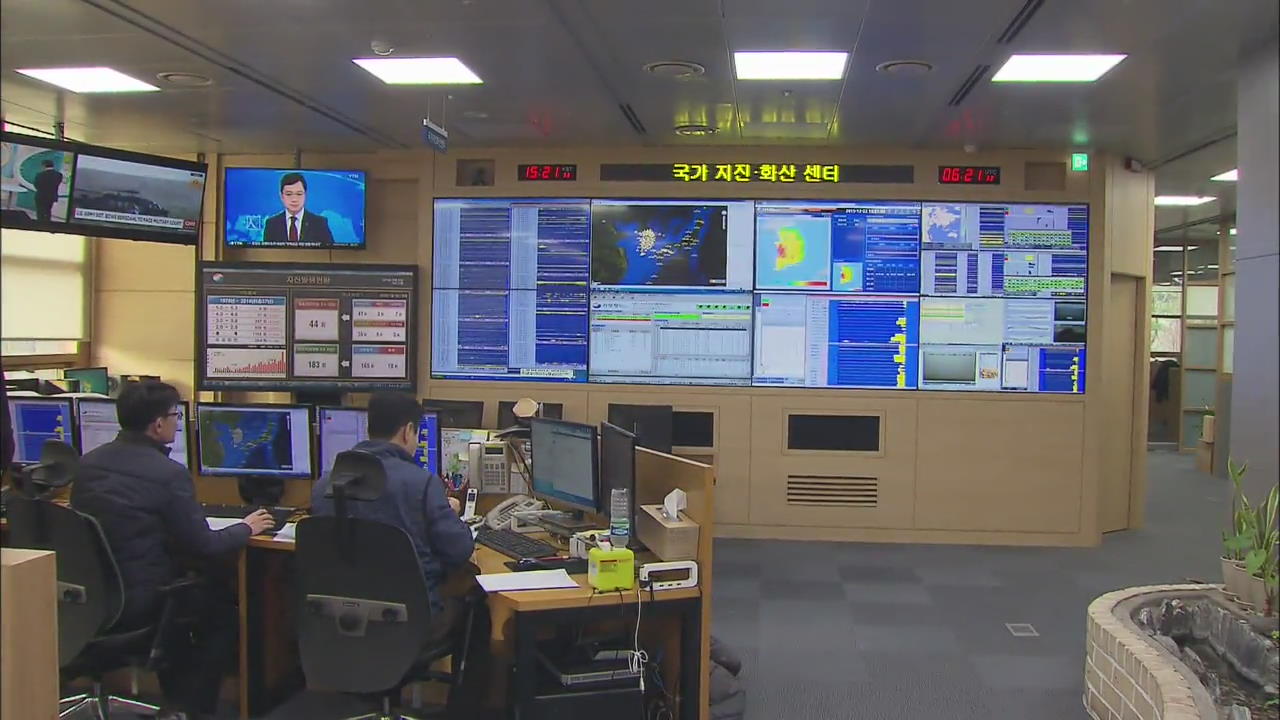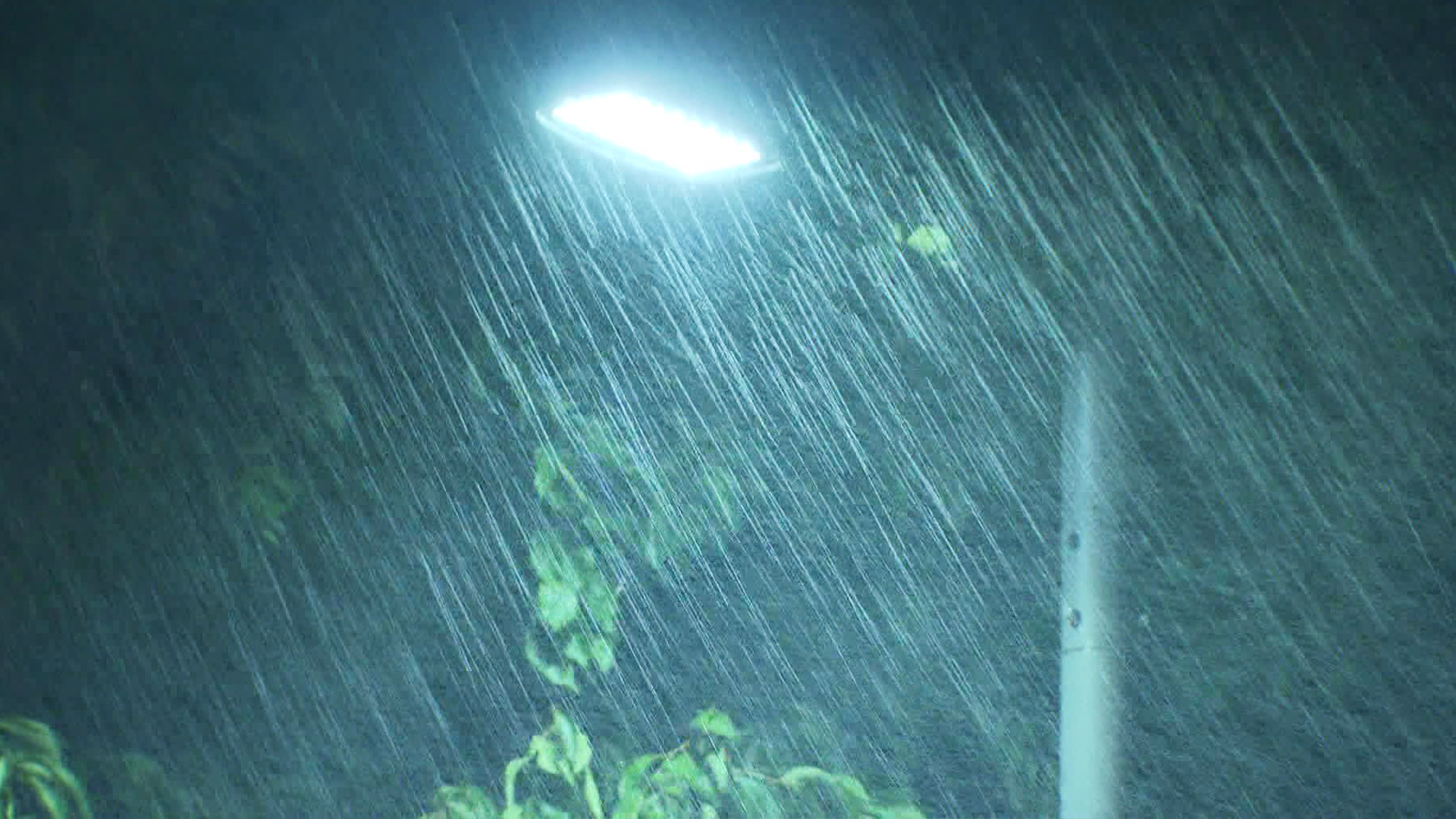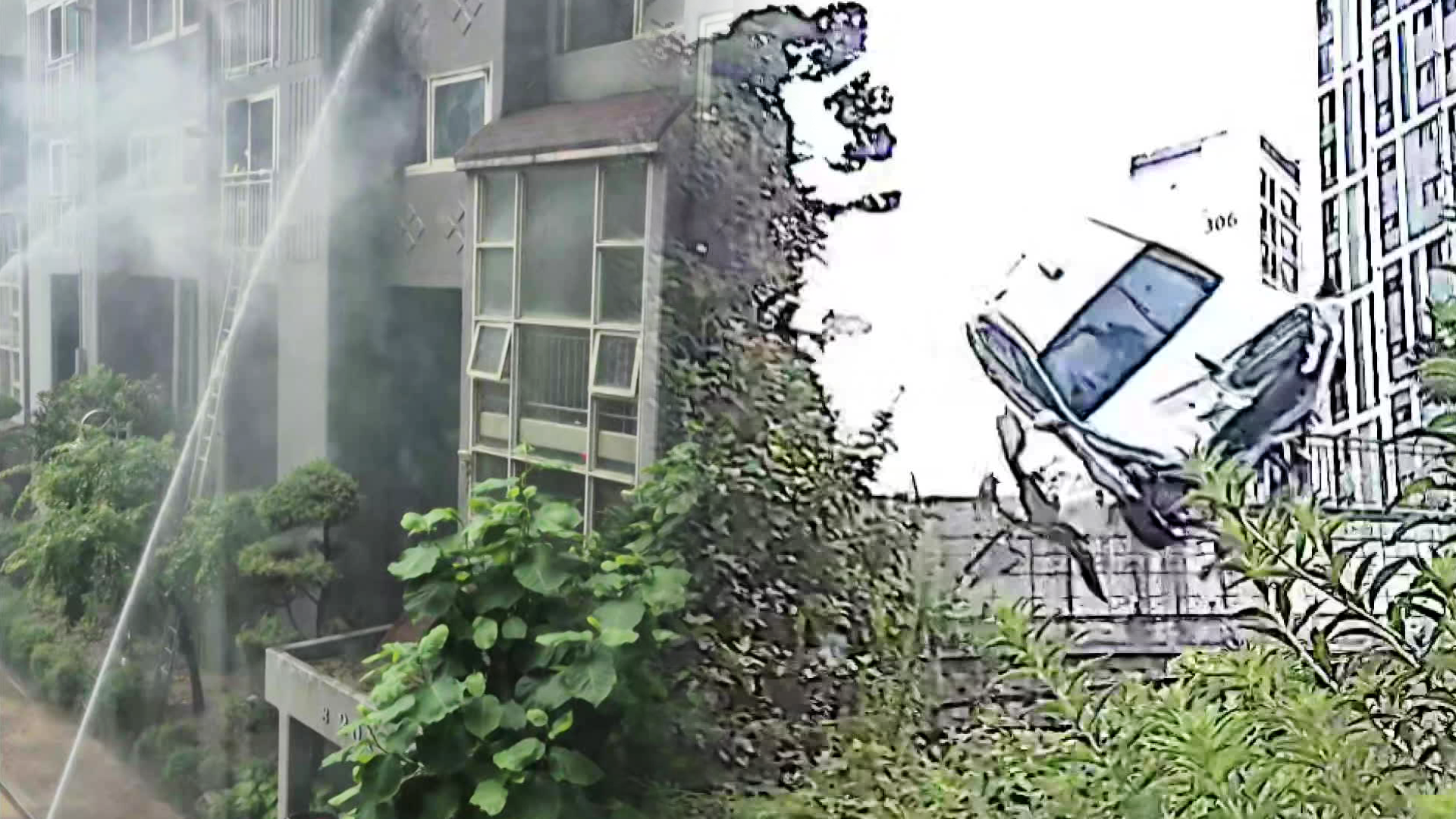Tremors in the North
입력 2017.09.25 (14:06)
수정 2017.09.25 (14:11)
읽어주기 기능은 크롬기반의
브라우저에서만 사용하실 수 있습니다.
[Anchor Lead]
The Korea Meteorological Administration announced that two tremors were detected in North Korea on September 23rd. They were later concluded to be naturally occurring earthquakes. However, some experts say they were in fact aftershocks resulting from the North's sixth nuclear test on September 3rd. Concerns are even arising that the nuclear tests could trigger the active volcano Baekdu-san Mountain to erupt.
[Pkg]
It has been revealed that a 2.6-magnitude tremor was felt near North Korea's Punggye-ri, three hours before a 3.2-magnitude earthquake occurred there.
[Soundbite] Woo Nam-cheol(Korea Meteorological Admin. Analyst) : "The distance between the quake-hit region and an observation network was quite far. The recorded signals were very weak, making the analysis difficult."
Based on its analysis, the Korea Meteorological Administration reaffirmed that they were natural earthquakes. Chinese seismological authorities also concluded that the tremors were a natural phenomenon, shifting from their earlier position that they were artificially caused. However, a UN nuclear test monitoring agency analyzed that these quakes are aftershocks resulting from the North's sixth nuclear test. It said that the tremors are connected to geological pressure caused by massive explosions on September third. Korean experts also raised the possibility that the latest nuclear test could have caused tunnels to collapse or landslides to occur. In particular, it's possible that the built-up stress of underground faults was unleashed in the wake of the nuclear test.
[Soundbite] Prof. Hong Tae-kyung(Yonsei University) : "Cracks have been observed and energy has been discharged since the nuclear test. They can look like natural earthquakes at first glance. However, they can be the result of a nuclear test."
There are concerns that radioactive materials released by the quakes will contaminate the air or groundwater.
[Soundbite] Shin Won-sik(Former Joint Chiefs of Staff) : "The Bukhan-gang River could be affected if seriously polluted groundwater reaches the Geumgang-san Mountain Dam."
South Korea, the U.S. and Japan are strengthening the monitoring of changes in radioactive substance levels, following the latest North Korean nuclear test.
The Korea Meteorological Administration announced that two tremors were detected in North Korea on September 23rd. They were later concluded to be naturally occurring earthquakes. However, some experts say they were in fact aftershocks resulting from the North's sixth nuclear test on September 3rd. Concerns are even arising that the nuclear tests could trigger the active volcano Baekdu-san Mountain to erupt.
[Pkg]
It has been revealed that a 2.6-magnitude tremor was felt near North Korea's Punggye-ri, three hours before a 3.2-magnitude earthquake occurred there.
[Soundbite] Woo Nam-cheol(Korea Meteorological Admin. Analyst) : "The distance between the quake-hit region and an observation network was quite far. The recorded signals were very weak, making the analysis difficult."
Based on its analysis, the Korea Meteorological Administration reaffirmed that they were natural earthquakes. Chinese seismological authorities also concluded that the tremors were a natural phenomenon, shifting from their earlier position that they were artificially caused. However, a UN nuclear test monitoring agency analyzed that these quakes are aftershocks resulting from the North's sixth nuclear test. It said that the tremors are connected to geological pressure caused by massive explosions on September third. Korean experts also raised the possibility that the latest nuclear test could have caused tunnels to collapse or landslides to occur. In particular, it's possible that the built-up stress of underground faults was unleashed in the wake of the nuclear test.
[Soundbite] Prof. Hong Tae-kyung(Yonsei University) : "Cracks have been observed and energy has been discharged since the nuclear test. They can look like natural earthquakes at first glance. However, they can be the result of a nuclear test."
There are concerns that radioactive materials released by the quakes will contaminate the air or groundwater.
[Soundbite] Shin Won-sik(Former Joint Chiefs of Staff) : "The Bukhan-gang River could be affected if seriously polluted groundwater reaches the Geumgang-san Mountain Dam."
South Korea, the U.S. and Japan are strengthening the monitoring of changes in radioactive substance levels, following the latest North Korean nuclear test.
■ 제보하기
▷ 카카오톡 : 'KBS제보' 검색, 채널 추가
▷ 전화 : 02-781-1234, 4444
▷ 이메일 : kbs1234@kbs.co.kr
▷ 유튜브, 네이버, 카카오에서도 KBS뉴스를 구독해주세요!
- Tremors in the North
-
- 입력 2017-09-25 14:08:12
- 수정2017-09-25 14:11:11

[Anchor Lead]
The Korea Meteorological Administration announced that two tremors were detected in North Korea on September 23rd. They were later concluded to be naturally occurring earthquakes. However, some experts say they were in fact aftershocks resulting from the North's sixth nuclear test on September 3rd. Concerns are even arising that the nuclear tests could trigger the active volcano Baekdu-san Mountain to erupt.
[Pkg]
It has been revealed that a 2.6-magnitude tremor was felt near North Korea's Punggye-ri, three hours before a 3.2-magnitude earthquake occurred there.
[Soundbite] Woo Nam-cheol(Korea Meteorological Admin. Analyst) : "The distance between the quake-hit region and an observation network was quite far. The recorded signals were very weak, making the analysis difficult."
Based on its analysis, the Korea Meteorological Administration reaffirmed that they were natural earthquakes. Chinese seismological authorities also concluded that the tremors were a natural phenomenon, shifting from their earlier position that they were artificially caused. However, a UN nuclear test monitoring agency analyzed that these quakes are aftershocks resulting from the North's sixth nuclear test. It said that the tremors are connected to geological pressure caused by massive explosions on September third. Korean experts also raised the possibility that the latest nuclear test could have caused tunnels to collapse or landslides to occur. In particular, it's possible that the built-up stress of underground faults was unleashed in the wake of the nuclear test.
[Soundbite] Prof. Hong Tae-kyung(Yonsei University) : "Cracks have been observed and energy has been discharged since the nuclear test. They can look like natural earthquakes at first glance. However, they can be the result of a nuclear test."
There are concerns that radioactive materials released by the quakes will contaminate the air or groundwater.
[Soundbite] Shin Won-sik(Former Joint Chiefs of Staff) : "The Bukhan-gang River could be affected if seriously polluted groundwater reaches the Geumgang-san Mountain Dam."
South Korea, the U.S. and Japan are strengthening the monitoring of changes in radioactive substance levels, following the latest North Korean nuclear test.
The Korea Meteorological Administration announced that two tremors were detected in North Korea on September 23rd. They were later concluded to be naturally occurring earthquakes. However, some experts say they were in fact aftershocks resulting from the North's sixth nuclear test on September 3rd. Concerns are even arising that the nuclear tests could trigger the active volcano Baekdu-san Mountain to erupt.
[Pkg]
It has been revealed that a 2.6-magnitude tremor was felt near North Korea's Punggye-ri, three hours before a 3.2-magnitude earthquake occurred there.
[Soundbite] Woo Nam-cheol(Korea Meteorological Admin. Analyst) : "The distance between the quake-hit region and an observation network was quite far. The recorded signals were very weak, making the analysis difficult."
Based on its analysis, the Korea Meteorological Administration reaffirmed that they were natural earthquakes. Chinese seismological authorities also concluded that the tremors were a natural phenomenon, shifting from their earlier position that they were artificially caused. However, a UN nuclear test monitoring agency analyzed that these quakes are aftershocks resulting from the North's sixth nuclear test. It said that the tremors are connected to geological pressure caused by massive explosions on September third. Korean experts also raised the possibility that the latest nuclear test could have caused tunnels to collapse or landslides to occur. In particular, it's possible that the built-up stress of underground faults was unleashed in the wake of the nuclear test.
[Soundbite] Prof. Hong Tae-kyung(Yonsei University) : "Cracks have been observed and energy has been discharged since the nuclear test. They can look like natural earthquakes at first glance. However, they can be the result of a nuclear test."
There are concerns that radioactive materials released by the quakes will contaminate the air or groundwater.
[Soundbite] Shin Won-sik(Former Joint Chiefs of Staff) : "The Bukhan-gang River could be affected if seriously polluted groundwater reaches the Geumgang-san Mountain Dam."
South Korea, the U.S. and Japan are strengthening the monitoring of changes in radioactive substance levels, following the latest North Korean nuclear test.
이 기사가 좋으셨다면
-
좋아요
0
-
응원해요
0
-
후속 원해요
0

















이 기사에 대한 의견을 남겨주세요.